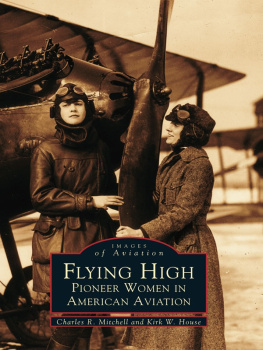Published by The History Press
Charleston, SC
www.historypress.com
Copyright 2020 by Dr. Jack Stokes Ballard
All rights reserved
First published 2020
E-book edition 2020
ISBN 978.1.43967.061.3
Library of Congress Control Number: 2020934362
print edition ISBN 978.1.46714.633.3
Notice: The information in this book is true and complete to the best of our knowledge. It is offered without guarantee on the part of the author or The History Press. The author and The History Press disclaim all liability in connection with the use of this book.
All rights reserved. No part of this book may be reproduced or transmitted in any form whatsoever without prior written permission from the publisher except in the case of brief quotations embodied in critical articles and reviews.
This book is dedicated to my wife, Arleda, who, over sixty-five-plus years, ably and patiently supported my enduring interest in history and the writing of my books.
CONTENTS
PREFACE
Many a word has been written about the man Ivy Baldwin. His name appeared numerous times in newspapers and entertainment notices from San Francisco to Baltimore and especially in Quincy, Illinois, and Denver, Colorado. From 1890 to 1953, he achieved celebrity status as a premier American aerialist and aeronaut. As his reputation spread, he was known by thousands of average citizens who were amazed at his courageous exploits. People literally looked up to Ivy Baldwin because he skillfully performed in the air, whether as a tightrope walker, balloonist, tower diver, parachutist or aviator. His death-defying exhibitions attracted thousands of paying spectators, and he acted as the headliner for various amusement parks and summer celebrations. Like so many television, movie and music stars today, Ivy Baldwin, in his time, was an extraordinary and fearless entertainer.
As Ivy Baldwins life story unfolds, however, one quickly learns that he was more than an entertainment celebrityhe was an aviation pioneer. From his initial time as a balloonist in traveling shows, through his time as a balloonist in the army and his experiences in the Spanish-American War, to his many crashes in airplanes, Ivy Baldwin had a serious vision of man successfully navigating across the sky. He built, tested and flew balloons, dirigibles and airplanes. In addition, he earnestly sought to improve balloons and their support equipment. Pragmatically, he explored and participated in attempts at aerial photography, the assessment of air currents and the means of obtaining directional flight. As a daring experimenter, he eventually established a number of aviation firsts.
Ivy Baldwin as a young man, pictured about the time he toured as a balloonist and entertainer with the Baldwin Brothers Show. History Colorado Collection.
The combination in one man of a consummate and celebrated entertainer and a pragmatic experimenter and pioneering participant in the fast-developing flight vehicles of the time made Ivy Baldwin a complex, interesting and unusual individual. However, his exploits, exciting as they were in the newspapers, did not fully define Baldwins character and especially his notable contributions to the beginning of mans ability to fly. I hope this biography fills that void while telling the story of Ivy Baldwins remarkable career.
A deliberate attempt has been made to incorporate the colorful newspaper descriptions of Ivy Baldwins performances and his near-death experiences. At the same time, care has been taken in assessing the accuracy of comments, as many errors and contradictions arose when comparing articles. Ivy Baldwins scrapbook, held by the History Colorado Museum library, served as a starting point for Ivy Baldwin research. The scrapbook contained news clippings that Baldwin collected over many years.
The Denver Public Library, the Friends of Historic Fort Logan Archives, Colorado Aviation Historical Society Archives and the Wings Over the Rockies Air and Space Museum Research Library provided important material and offered kind assistance in research and writing. Especially appreciated assistance came from Wendy Hall at the Carnegie Library for Local History of the Boulder Public Library and Nancy C. Dixon at the Quincy Museum in Quincy, Illinois. Ron Newberg, George Paxton and Judy Zelio reviewed the manuscript and offered critical and valuable comments that strengthened and improved this biography of Ivy Baldwin.
Jack Stokes Ballard
A DARING CAREER BEGINS
He knew absolutely nothing about a balloon, but he had the nerve, and that is the stuff that aeronauts are made of.
Houston Daily Post , 1905
The impressive list included acrobat, aeronaut, balloonist, parachute jumper, trapeze artist, tightrope walker, entertainer and aviator. Those were some of the titles assigned to one man, the legendary Ivy Baldwin. Also, citizens from many other countries, and especially those from the state of Colorado, attached to those titles such colorful descriptive terms as reckless, crazy, daring and courageous. While Ivy Baldwin truly earned all those titles, they did not fully capture Ivy Baldwin the man. He had a unique personality and was an individual whom many never knew. Without a doubt, in the late nineteenth and early twentieth centuries, Ivy Baldwin, the master of so many entertaining aerial acts, reigned at or near the top of the United States professional aeronauts. Few believed he could be surpassed in his aerial artistry and achievements, and they made him famous in his time and for the following generations.
Born in Houston, Texas, on July 31, 1866, the fourth son of John H. and Elizabeth Ivy, the future Ivy Baldwin entered the world as William Ivy. In the family, he would always be called Willie. Little is known about his early childhood in south Texas, other than that he was a newsboy and shined shoes. As the years passed, he remained small in stature but very athletic. He would put his size and these notable physical attributes to advantage as he rapidly evolved into a circus acrobat and trapeze performer.
Ivy ran away from his Houston home when he was thirteen. he caught the eye of the owner of the Thayer-Noyes Circus. Hired on the spot, he then traveled with the circus and reportedly could do seven acts a day, quickly becoming one of the best performers. Later, he toured with the Sells Brothers Circus and soon developed into a more rounded showman by adding acrobatic and trapeze acts. Ivy often used an assumed billing name, as he feared his parents might pursue him. His early departure from his home and his subsequent circus performances reflected his adventuresome spirit and a strong desire to try almost anything. An element of wanderlust, appropriate for the circus shows, would dominate many years in Ivys life.
Ivys daring acts caused many injuries. He suffered a broken ankle and ribs at Wichita Falls, Texas, in 1882, when a drunk rode a horse into some men holding his tightrope guywires. Regardless of injuries, Ivy enjoyed the itinerant lifestyle and the attention he received in a traveling circus show.
One of Ivys favorite stories of his early yearsand he had many of themconcerned a tightrope walk in Baltimore. During a Shriners convention, he was to do a wire walk from 120 feet over a street. After the first performance, he encountered the police, who informed him that the city had an ordinance banning any aerial act without a safety net under it. He received a fine of five dollars. Ivy then went to the port docks, bought an old fishing net and laid it on the pavement under the wire for the next days exhibition. He succeeded in avoiding another fine, and he delighted in claiming that he had out-foxed the police and city authorities.













